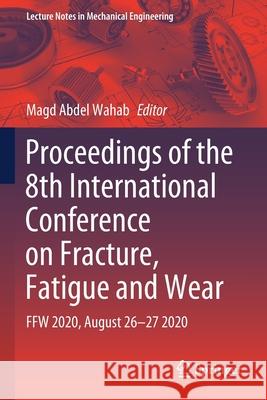Proceedings of the 8th International Conference on Fracture, Fatigue and Wear: Ffw 2020, August 26-27 2020 » książka
topmenu
Proceedings of the 8th International Conference on Fracture, Fatigue and Wear: Ffw 2020, August 26-27 2020
ISBN-13: 9789811598951 / Angielski / Miękka / 2022 / 784 str.
Proceedings of the 8th International Conference on Fracture, Fatigue and Wear: Ffw 2020, August 26-27 2020
ISBN-13: 9789811598951 / Angielski / Miękka / 2022 / 784 str.
cena 805,10
(netto: 766,76 VAT: 5%)
Najniższa cena z 30 dni: 771,08
(netto: 766,76 VAT: 5%)
Najniższa cena z 30 dni: 771,08
Termin realizacji zamówienia:
ok. 22 dni roboczych
Bez gwarancji dostawy przed świętami
ok. 22 dni roboczych
Bez gwarancji dostawy przed świętami
Darmowa dostawa!
Kategorie:
Kategorie BISAC:
Wydawca:
Springer
Język:
Angielski
ISBN-13:
9789811598951
Rok wydania:
2022
Ilość stron:
784
Waga:
1.07 kg
Wymiary:
23.39 x 15.6 x 3.96
Oprawa:
Miękka
Wolumenów:
01
Dodatkowe informacje:
Wydanie ilustrowane











